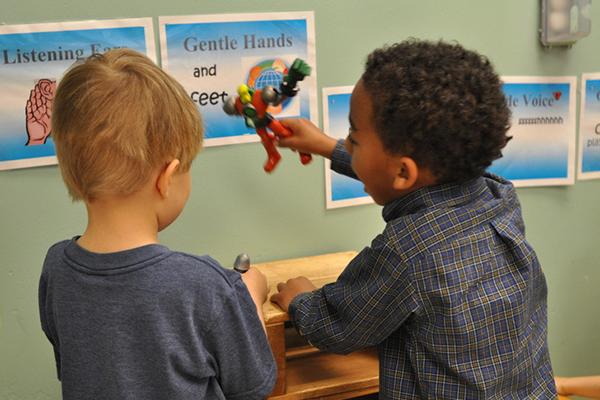
FPG Investigators Create a Model for Addressing Racial Equity in Schools
Research shows that disproportionate discipline practices occur at all ages and grade levels, negatively affecting students of color. A new publication from Doré LaForett, PhD, and Allison De Marco, MSW, PhD, of the UNC Frank Porter Graham Child Development Institute, suggests that addressing this problem requires a comprehensive approach that targets students, educators, and the broader educational system.
In "A Logic Model for Educator-Level Intervention Research to Reduce Racial Disparities in Student Suspension and Expulsion," which was published online August 29, 2019, in Cultural Diversity and Ethnic Minority Psychology, the researchers present a logic model for educator-level interventions that have the potential to reduce unequal discipline practices and ultimately work toward a more equitable school climate.
Previous research has shown that students of color in the U.S. education system experience disproportionate rates of suspension and expulsion relative to White peers, creating a racial equity issue with far-reaching effects.
LaForett and De Marco propose that purposefully integrating social and emotional learning, classroom management strategies, cultural competence, and racial equity approaches that target educators is necessary to support children's constitutional right to a free public education, a right that is violated by unequal discipline practices and the exclusion of children from the classroom.
"Disproportionate discipline practices occur at all ages and grade levels. States and districts are increasingly aware of this problem," says LaForett. "What we are arguing in our paper is that this is a multi-faceted issue, and it cannot be addressed by one approach alone. Yes, we need to support the development of students' social and emotional skills and equip teachers with effective classroom management strategies. But we also have to ensure that educators have the skills needed to teach students of color—which includes culturally responsive teachers and also requires tackling the history of race and racism in our school systems and in the United States more broadly."
De Marco says it is important that the approaches are implemented concurrently, instead of separately, so that educators can increase their own awareness, knowledge, and skills to achieve equitable relationships with students of color. The goal is to better equip educators to teach students of color and stop cycles of institutionalized racism in the U.S. education system.
"Research has shown that teachers exhibit implicit bias towards children of color at even the youngest ages," says De Marco. "Walter Gilliam's team at the Yale Child Study Center found that, using eye-tracking technology, preschool teachers were more likely to look for problem behaviors in Black boys in a group of children even when no problem behaviors were occurring. Our socialization is strong, and interventions that help teachers understand race, racism, racial equity, their role in perpetuating these inequities, and how to disrupt them are needed."
LaForett and De Marco suggest that, to fully test the potential impact depicted in their logic model, more research is needed in terms of what measures need to be developed to address implicit bias and equity issues in education settings, the impact of racial equity interventions on educators, and measuring the effects of racial equity training on participating educators.
"Because there is little research on what it is like to implement these interventions in education settings—and what their potential benefit may be for educators and for students—we are taking the next step forward to design studies that can begin to provide answers to these questions," says LaForett.
